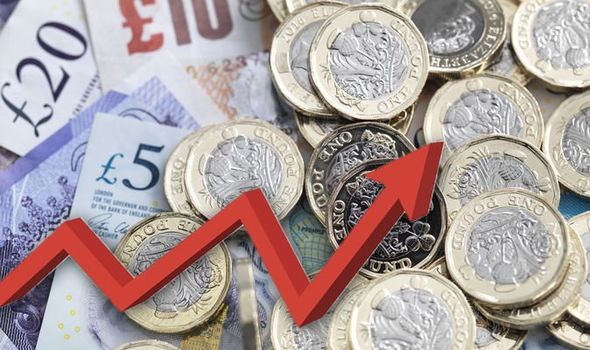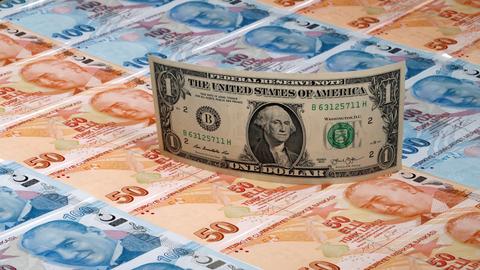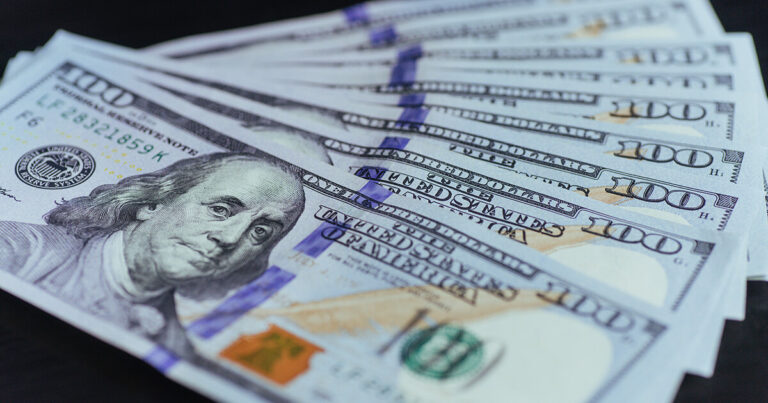 As the exchange rate latest news turned positive in the week, the riskier assets took the top spot, with the safe-haven currencies seeking refuge at the bottom territories.
As the exchange rate latest news turned positive in the week, the riskier assets took the top spot, with the safe-haven currencies seeking refuge at the bottom territories.
In the week, central bank chatter and economic data primarily drove g7’s foreign exchange market activities. And while weak PMI data pinned down the Japanese yen, on the other hand, improved trade and consumer data uplifted the Kiwi dollar to the top spot.
The Fundamentals In The Foreign Exchange News

The Delta Plus Coronavirus Variant
First identified in India, the delta variant has now mutated to another variant, delta plus, highly contagious. The delta plus has spread to all the g7 economies and other countries raising concerns for global health experts.
Due to increased infections linked to delta plus variant Australia locked some parts of its region with acute infection numbers. And it has caused significant worries in Britain despite the country having a reasonable vaccination rate.
Central Bank Sentiments
Positive chatters from Fed Chair Powell and other G7 central banks’ governors assured investors that inflation is temporal and monetary policy tightening might not happen as expected.
Powell and his peers showed that inflation alone was not enough to cause changes in economic policies. A more hawkish stance needs tightening of the labor market.
Economic Updates
The economic updates in the exchange rate latest news among the g7 and around the globe point to a continued strong economic recovery, despite the continuing coronavirus pandemic.
The positive updates lead to risk on appetite pushing the comdolls to the top spots while pressuring the safe-haven currencies southwards. For instance, the Eurozone GDP expanded quickly, and the US factory activity figures spiked to a record high.
Oil Price Forecast
Oil prices increased by 3.57% in the week to mark a 5th weekly gain but failed to rise above $75 per barrel. Global economic recovery and increased demand determined the oil price forecasts.
G7 Weekly Performance And Economic Review
Table: performance summary
| currency pair | 21st June | 27th June | Average | percentage change | remarks |
| USD | 91.881 | 91.844 | 91.8111 | 0.39 | drop |
| GBPUSD | 1.3929 | 1.3877 | 1.3927 | 0.4924 | drop |
| EURUSD | 1.1915 | 1.1933 | 1.1928 | 0.6155 | increase |
| USDCHF | 0.9178 | 0.9175 | 0.9179 | 0.5312 | drop |
| USDJPY | 110.30 | 110.77 | 110.70 | 0.53 | increase |
| USDCAD | 1.2359 | 1.2294 | 1.2317 | 1.3481 | drop |
| AUDUSD | 0.7535 | 0.7586 | 0.7566 | 1.4578 | increase |
| NZDUSD | 0.6985 | 0.7072 | 0.7036 | 2.0049 | increase |
USD On The Dowfall
In a busy week in the US, FED chair Powell chatter and economic data pulled the dollar down after a previous week’s superb performance. It dropped 0.41% to 91.851, reversing a previous rally of 2.32%.
However, the first half of the week was quiet. But from midweek, a mixed bag of economic data affected the performance of the dollar. While the industrial sector improved from 62.1 to 62.6, the service sector dropped from 70.4 to 64.8.
On Thursday, weekly jobless claims and core durable goods figures disappointed, with initial jobless claims dropping modestly from 418k to 411k. Economists had predicted durable goods orders to rise by 0.8% but failed to impress, growing slightly by 0.3%.
Market optimism was further boosted on Thursday by the US Senate Bipartisan Agreement on infrastructure development of $1.2 trillion to improve broadband, bridges, and roads. Wrapping up the week, foreign exchange investors focused on inflation and personal consumption figures.
Personal spending stagnated, falling short of a 0.4% prediction rise. But yearly inflationary pressure increased as expected by 3.4%. Expectation and completed consumer sentiments figures – improved from 82.9 to 85.5 – failed to move the dial in the foreign exchange rate latest news.
The Major Currencies In Europe
Sterling Pound Superb Performance
Britain had a relatively quiet week that saw its currency strengthening by 0.50% to close at 1.3879, losing 2.45% in the previous week. Economic updates and BoE monetary policy drove the performance of the sterling pound.
Industrial Trend Orders – the only positive data of the week – uptick to 19 from 17, with the private sector having a muted impact. The manufacturing index declined to 64.2 from 65.6, and the service sector settled at 61.7 from 62.9.
While the economic data weighed on the pound, the Bank of England monetary policy forced it lower before bouncing back on Thursday. As expected, the Bank left the monetary policy unchanged.
The delta plus coronavirus added to the pound’s downfall for the week as the new strain increased new infection cases. The new variant has caused new infection levels to grow to over 15K per day.
Eur Usd Market Prediction
In a relatively busy week, the euro grew by 0.61% to 1.193, following a previous week’s 2.50% decline. ECB monetary policies and economic updates supported eur usd market prediction.
The first half of the week lacked economic data, but, midweek, the private sector and consumer confidence levels featured in the exchange rate latest news. Germany’s manufacturing index increased from 64.4 to 64.9, while the services expanded from 52.8 to 58.1.
France’s services also supported the euro, improving from 56.6 to 57.4, but the Manufacturing sector weighed on it, dropping from 59.4 to 58.6. Overall, the Eurozone’s manufacturing index steadied at 63.1, while the services sector jumped from 55.2 to 58.0.
The spike in service activity pushed the composite index to 59.2, the highest in 180 months. As the week progressed, consumer and business sentiment statistics supported the euro. The Business Climate Index improved from 99.2 to 101.8, better than100.6 economists’ projection.
The Business index spiked from 102.9 to 104.0, also better than a prediction of 103.9 by economists. Consumer confidence jumped from -6.9 to -0.3, overshadowing the forecasted -4.0 rise by economists.
The positive changes in consumer confidence supported the ECB’s view on consumer spending forecasts. On Thursday, the ECB chatted on monetary policies, and the economic outlook uplifted the euro. ECB president Lagarde’s statement painted an optimistic economic forecast for the Eurozone.
Chf USD Exchange Rate Forecast
For the week, the Swiss franc lost 0.53% to close at 0.9175 against the dollar. Risk on sentiments, economic updates, and delta variant coronavirus emergence impacted chf usd exchange rate forecast.
FEDs chatter on interest rates had investors shying away from the Swiss franc. Despite the ongoing pandemic, the Swiss nationals still favored cash over payments with cards and apps. However, Swiss franc usage dropped during the pandemic.
Meanwhile, in Canada, it was a bullish week….
Usd To Cad Predictions
Despite Canada’s quiet week, the Lonnie recorded a 1.39% increase to close at 1.2292 against the American dollar. Previously it had tumbled massively by 3.15. Economic data and a weaker dollar primarily drove usd to cad predictions.
Retail sales figures disappointed, sliding by 5.7%, and core retail sales slumped by 7.2l%. High oil prices in the week boosted the Canadian dollar.
Asia-Pacific Majors
As the Japanese yen tumbled, the Australian and the New Zealand Dollars had a bullish week in a relatively quiet week.
Aud vs US Dollar Forecast
For the week, the Australian dollar rose by 1.49% to close at 0.7590 against the greenback. Australia’s retail sales figures failed to support the Aussie, increasing dismally by 0.1%, falling short of the 0.4% prediction.
Also, Australia’s trade surplus jumped from 9.67 B AUD to 13.32B AUD. The delta plus coronavirus variant negatively impacted on aud vs US dollar forecast. For instance, Victoria state reintroduced COVID-19 restrictions because of a surge in infection rate from the new variant.
USD vs NZD Exchange Rate
The Kiwi Dollar gained 1.98% to close at 0.7073 against the greenback. COVID-19 fresh cases and economic data significantly affected usd vs nzd exchange rate in the week. Consumer sentiment bounced back earlier in the week, with the consumer index shooting up from 105.2 to 107.1.
At the end of the week, consumer sentiment and trade data appeared in the exchange rate latest news. The Westpac Customer Index rose to 107.1 from 105.2 in Q 2, reflecting a stronger consumer sentiment. Retail credit card spending also supported the kiwi after it spiked by 8.5%.
On Friday, trade data boosted the Kiwi Dollar – the country’s trade surplus grew from NZ$414 to NZ$469 million. But, yearly, the trade balance narrowed from NZ$760m surplus to a deficit of NZ$62m.
As the coronavirus pandemic economic recovery continued, car imports increased to an all-time high, and dairy goods exports picked up.
Dollar to Yen Prediction
For the week, the Japanese Yen declined by 0.49% to 110.76 against the greenback. In the week before, the yen had shrunk by 0.63% to 110.210. Early in the week, Japan lacked economic data to provide direction for dollar to yen prediction.
On Wednesday, private sector figures had a mixed bag for the yen. Japan’s manufacturing index dropped from 53.0 to 51.5, with the services sector rising from 46.5 to 47.2. On Friday, inflation figures impacted the exchange rate latest news. Consumer prices remained steady year on year while monthly consumer prices dropped by 0.25%.
Conclusion

As risk on sentiments returns on the exchange rate latest news the US dollar and Japanese yen closed the week lower. And the positive sentiments uplifted the commodity-related assets.
Related:




